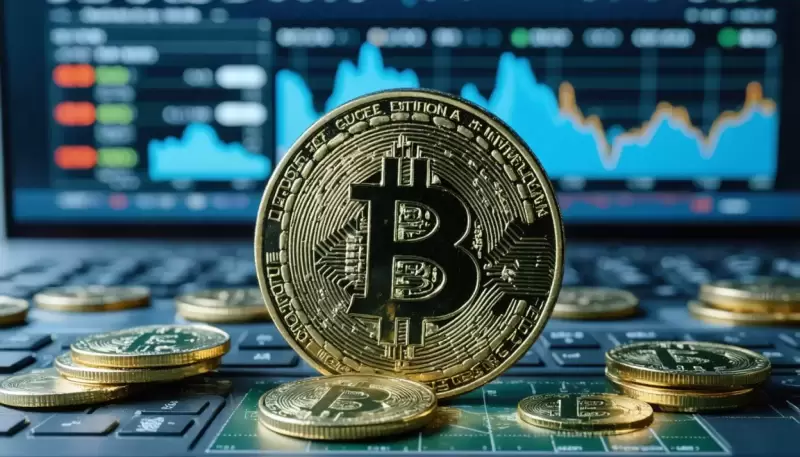 |
|
 |
|
 |
|
 |
|
 |
|
 |
|
 |
|
 |
|
 |
|
 |
|
 |
|
 |
|
 |
|
 |
|
 |
|
如果您將腳趾浸入了加密貨幣的世界中,您就會知道演習:價格可以狂奔

If you've dipped your toes into the world of cryptocurrency, you know the drill: prices can swing wildly, making headlines for sudden surges or stomach-churning drops (although recent events in the stock markets surrounding Trump’s tariff policy show this isn’t exclusively limited to crypto).
如果您將腳趾浸入了加密貨幣的世界中,您就會知道演習:價格可能會狂奔,成為突然潮流或胃部削減掉落的頭條新聞(儘管特朗普關稅政策圍繞股票市場的最近事件顯示,這不僅限於加密貨幣)。
But amidst this volatility, a different kind of digital asset has quietly become essential plumbing for the crypto ecosystem: the stablecoin. Pegged to familiar currencies like the US dollar, these tokens aim to be the calm in the crypto storm, offering a reliable digital stand-in for everyday money. Their usefulness for trading, payments, and even just holding value digitally has made them incredibly popular, especially across Asia – a region buzzing with crypto activity and accounting for a massive slice of global trades (Cryptocurrency in Asia: The Adequate Laws and Regulations).
但是,在這種波動性中,另一種數字資產已悄悄地成為加密生態系統的必不可少的管道:stablecoin。這些代幣的目標是掛在熟悉的貨幣中,目的是成為加密風暴中的平靜,為日常貨幣提供可靠的數字替身。它們對交易,付款甚至僅在數字上具有價值的有用性使它們變得非常受歡迎,尤其是在整個亞洲 - 這個地區充滿了加密活動,並考慮了大量的全球貿易(亞洲加密貨幣:適當的法律和法規)。
But this success hasn't gone unnoticed by regulators. As billions flow through stablecoins daily, governments from Tokyo to Singapore to New Delhi are grappling with a critical question: how do you regulate these digital dollars and local currency equivalents to ensure they are genuinely stable and safe, without stifling the innovation they represent?
但是,監管機構並沒有註意到這種成功。隨著數十億美元的每日流動,從東京到新加坡再到新德里的政府正在努力解決一個關鍵問題:您如何規範這些數字美元和當地貨幣等效物,以確保它們真正穩定且安全,而不會扼殺牠們所代表的創新?
As of early 2025, the answer across Asia isn’t a single chorus, but a complex harmony of different tunes. Some nations are laying down clear, welcoming frameworks, hoping to attract the burgeoning digital finance industry. Others are moving more cautiously, wary of potential risks to their financial systems. This article explores this unfolding regulatory patchwork, looking at how key Asian countries are shaping the rules for stablecoins and what it means for users and the future of digital money in the region.
截至2025年初,整個亞洲的答案不是一個合唱,而是不同音樂的複雜和諧。一些國家正在建立清晰,熱情的框架,希望吸引新興的數字金融業。其他人則更加謹慎地行動,對其金融系統的潛在風險保持警惕。本文探討了這種不斷發展的監管拼布,研究了亞洲主要國家如何塑造Stablecoins的規則,以及對用戶和該地區數字貨幣的未來意味著什麼。
Why Stablecoins Need Rules: Keeping Things Safe and Sound
為什麼穩定幣需要規則:確保事物安全和健全
Why are governments suddenly so interested in rules for stablecoins? There are a few key reasons:
為什麼政府突然對Stablecoins的規則如此感興趣?有幾個關鍵原因:
The Asian Landscape: A Patchwork of Approaches
亞洲景觀:方法
Unlike regions like Europe, which is moving towards a single set of rules (known as MiCA), Asia doesn’t have one unified approach. Instead, each country is developing regulations based on its own economic goals, technological readiness, and concerns about financial risk. Let’s look at some key players:
與像歐洲這樣的地區(朝著一組規則(稱為雲母))邁進的地區不同,亞洲沒有一種統一的方法。相反,每個國家都根據自己的經濟目標,技術準備和對財務風險的擔憂制定法規。讓我們看一些主要參與者:
Singapore: The Structured Innovator
新加坡:結構化創新者
Singapore has actively worked to become a leading hub for financial technology, including crypto. The Monetary Authority of Singapore (MAS), the country’s main financial regulator, has been proactive in setting clear guidelines.
新加坡已積極地成為包括加密在內的金融技術的領先樞紐。該國主要的金融監管機構新加坡貨幣管理局已積極制定明確的準則。
Stablecoins fall under Singapore’s Payment Services Act, which was recently updated with changes taking effect right around now, in early April 2025. These rules treat stablecoin issuers and service providers (like digital wallets holding stablecoins) as “digital payment token” (DPT) providers.
Stablecoins屬於新加坡的《支付服務法》,該法案最近在2025年4月上旬更新了變化。這些規則將對Stablecoin發行人和服務提供商(例如持有StableCoins的數字錢包)作為“數字支付代幣”(DPT)提供商。
Key aspects of Singapore’s approach include:
新加坡方法的關鍵方麵包括:
Singapore’s goal is clear: encourage innovation in the digital asset space while ensuring stability and robust consumer protection.
新加坡的目標是明確的:鼓勵在數字資產領域進行創新,同時確保穩定和強大的消費者保護。
Japan: Pioneering Specific Stablecoin Laws
日本:開拓特定的穩定法律
Japan was one of the first countries globally to recognize Bitcoin as a legal payment method back in 2017 and has continued to refine its crypto regulations. Notably, Japan took an early lead in specifically regulating stablecoins.
日本是全球最早在2017年將比特幣視為合法支付方法的國家之一,並繼續完善其加密法規。值得注意的是,日本在專門調節穩定的人方面取得了領先。
In June 2022, Japan passed a law dedicated to stablecoins, which came into effect in June 2023. This law clearly defines stablecoins and sets strict rules for who can issue them:
2022年6月,日本通過了一項專門針對Stablecoins的法律,該法律於2023年6月生效。該法律顯然定義了Stablecoins,並為誰可以發行它們制定了嚴格的規則:
Furthermore, Japan’s Financial Services Agency (FSA) is looking to further integrate crypto, including potentially stablecoins used for investment, into its mainstream financial regulations. There are plans, possibly taking effect by 2026, to treat crypto assets more like traditional financial products under the Financial Instruments and Exchange Act (Japan to give crypto assets legal status as financial products, Nikkei says). This includes potential rules against insider trading and discussions around a simpler flat tax rate for crypto earnings, moving away from potentially very high progressive rates.
此外,日本金融服務局(FSA)正在尋求將加密貨幣(包括潛在的用於投資的可能性穩定的加密貨幣)納入其主流金融法規。 Nikkei說,有計劃在2026年生效,將根據《金融工具和交換法》(日本賦予加密貨幣資產作為金融產品的法律地位)更像傳統金融產品對待加密貨幣資產。這包括反對內幕交易的潛在規則和圍繞加密貨幣收入的簡單統一稅率的討論,從而擺脫了潛在的非常高的漸進率。
Japan’s approach focuses heavily on user protection and financial stability by tightly controlling who can issue stablecoins and ensuring they are reliably backed and redeemable.
日本的方法非常關注用戶保護和財務穩定性,通過嚴格控制誰可以發行穩定的人並確保它們得到可靠的支持和贖回。
Hong Kong: Building a New Stablecoin Hub
香港:建造一個新的Stablecoin中心
Hong Kong, another major Asian financial center, is also actively developing its stablecoin regulations. Following public consultations, the Hong Kong Monetary Authority (HKMA) is planning to introduce a licensing regime specifically for issuers of “fiat-referenced stablecoins” (FRS) – stablecoins pegged to traditional currencies like the US dollar or HK dollar.
香港是另一個主要的亞洲金融中心,也正在積極制定其Stablecoin法規。經過公開諮詢,香港貨幣管理局(HKMA)計劃為“菲亞特(FIAT)參考的穩定者”(FRS)(FRS)(穩定的貨幣貨幣或諸如美元的美元或HK Dollar)掛鉤的發行人介紹許可製度。
The proposed rules focus on ensuring:
擬議的規則側重於確保:
Hong Kong aims to launch this regime sometime in 2024 or 2025, positioning itself as a welcoming place for well-regulated stablecoin activities, competing with Singapore for crypto business.
香港的目標是在2024年或2025年的某個時候啟動該政權,將自己定位為受監管良好的Stablecoin活動的熱情場所,與新加坡競爭加密貨幣業務。
India: High Taxes and Lingering Uncertainty
印度:高稅和揮之不去的不確定性
India presents a more complex and uncertain picture. While not explicitly banning cryptocurrencies, the Indian government has taken a very cautious stance, primarily through taxation.
印度提出了一個更複雜和不確定的情況。儘管沒有明確禁止加密貨幣,但印度政府主要是通過稅收採取了非常謹慎的立場。
This lack of clear regulation, combined with high taxes, makes it challenging for stablecoin users and businesses in India. While stablecoins are used, the environment
缺乏明確的法規,加上高稅收,這對於印度的Stablecoin用戶和企業而言,它具有挑戰性。在使用穩定的時,環境
免責聲明:info@kdj.com
所提供的資訊並非交易建議。 kDJ.com對任何基於本文提供的資訊進行的投資不承擔任何責任。加密貨幣波動性較大,建議您充分研究後謹慎投資!
如果您認為本網站使用的內容侵犯了您的版權,請立即聯絡我們(info@kdj.com),我們將及時刪除。
-

-

-

- 9個加密貨幣在接下來的幾天內觀看
- 2025-04-21 04:10:14
- 隨著加密貨幣市場的不斷發展,解鎖或代幣發行在確定加密貨幣的下一個大型動作中起著至關重要的作用。
-

- 目前,加密貨幣市場仍然柔和,沒有明顯的催化劑來向任何方向推動價格。
- 2025-04-21 04:10:14
- 目前,加密貨幣市場仍然柔和,沒有明顯的催化劑來向任何方向推動價格。
-

-

- 比特幣:全球經濟拔河比賽中不太可能的避難所
- 2025-04-21 04:05:13
- 美國和中國之間的猛烈經濟拔河架架,最初是由特朗普政府的關稅點燃的
-

-

- Filecoin(FIL)繼續在下降通道內合併
- 2025-04-21 04:00:13
- Filecoin價格預測表明,FIL目前正在下降渠道內交易,顯示了合併的跡象,因為它在關鍵移動平均之間波動。
-

- Solaxy Presale超過3000萬美元,展示了該項目的爆炸性增長潛力
- 2025-04-21 03:55:13
- 這標誌著該項目取得了巨大的成功,很明顯,這是一個機會,任何投資者都不會錯過。



























































